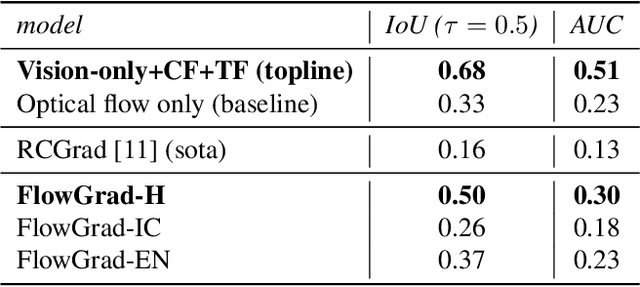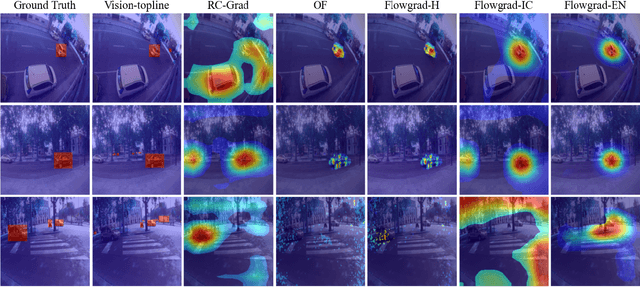FlowGrad: Using Motion for Visual Sound Source Localization
Paper and Code
Nov 15, 2022


Most recent work in visual sound source localization relies on semantic audio-visual representations learned in a self-supervised manner, and by design excludes temporal information present in videos. While it proves to be effective for widely used benchmark datasets, the method falls short for challenging scenarios like urban traffic. This work introduces temporal context into the state-of-the-art methods for sound source localization in urban scenes using optical flow as a means to encode motion information. An analysis of the strengths and weaknesses of our methods helps us better understand the problem of visual sound source localization and sheds light on open challenges for audio-visual scene understanding.
* Submitted to ICASSP 2023
 Add to Chrome
Add to Chrome Add to Firefox
Add to Firefox Add to Edge
Add to Edge